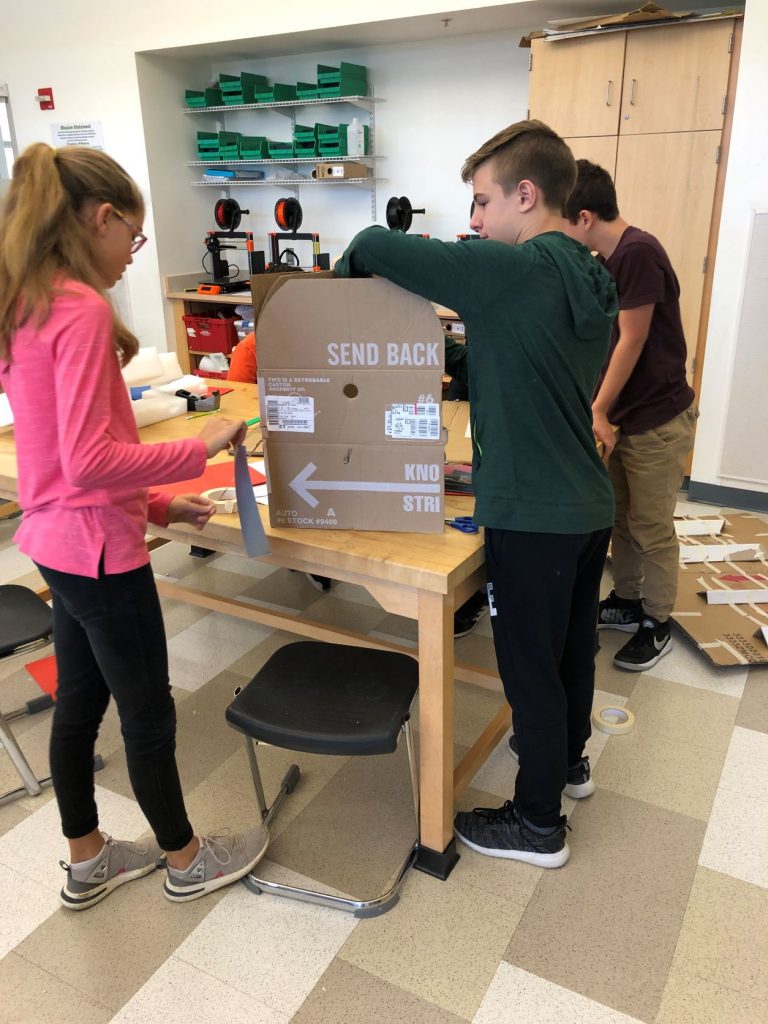Sutton Middle School, Sutton, Massachusetts
Our career exploration journey began when a district-wide Vision Committee composed of parents, educators, students, and school committee members determined more engineering opportunities were needed for our students. Our principal applied for a grant from ASA, which allowed us to develop the following 45-day mini-electives in the 8th grade to give students a taste of different engineering skill sets and careers:
- 3D Modeling and Printing;
- Sports Engineering (collaboration with the gym teacher);
- Green Engineering; and
- Helper Engineering.
In our first year of programming, students were thrilled to have some choice! While remote learning limited our ability to offer these mini-electives in the second year, it presented the opportunity to pivot to create a new class: Design Thinking Product Development. Students spent the first few months learning the design thinking process and doing hands-on projects with different STEM kits. Students built confidence while becoming familiar with various prototyping materials, then applied design thinking to develop a new product:
- They chose to work individually or in small groups.
- They chose the population for which they wanted to design, conducted interviews, established goals for this population, and then designed a product that helped the population meet one of their goals.
- They built a prototype, received additional feedback from the population, and then created a business and marketing plan for the product.
- Finally, they gave a Shark Tank-style presentation. We were fortunate to have professionals from a variety of fields Zoom into our class to listen to the student presentations and give feedback and encouragement.
Some of our lessons learned include:
- Design lessons for the students in front of you! Give opportunities for various talents to shine; and give lots of choice. When students were “stuck” and couldn’t think of what to make, I encouraged them to follow their passions, or what they most liked to do.
- For career-minded lessons, try to incorporate “real-world” activities as much as possible. While these activities may be above their capabilities, you may also be surprised by how much they can do. By conducting research on how similar products were made, some students learned much more about manufacturing than I thought they might.
- Low-fidelity prototypes are perfectly acceptable. Students were able to make prototypes of their designs, many of which were made of cardboard and tape. If you don’t have a 3D printer, students can design prototypes with Tinkercad and can even share their prototypes by screen sharing the Tinkercad file and rotating the view from different angles.
This course gave students the opportunity to develop skills such as coding, 3D modeling, circuit design, prototyping, determining a product’s price, logo development, package design, and public speaking, while exposing them to fields such as engineering, business, marketing, and entrepreneurship. Next year, we will return to giving students choice in their electives, but an additional elective will be offered: Shark Tank.
Visit the AMLE/ASA Career Exploration Resource Center for additional case studies, templates, research, and more.
